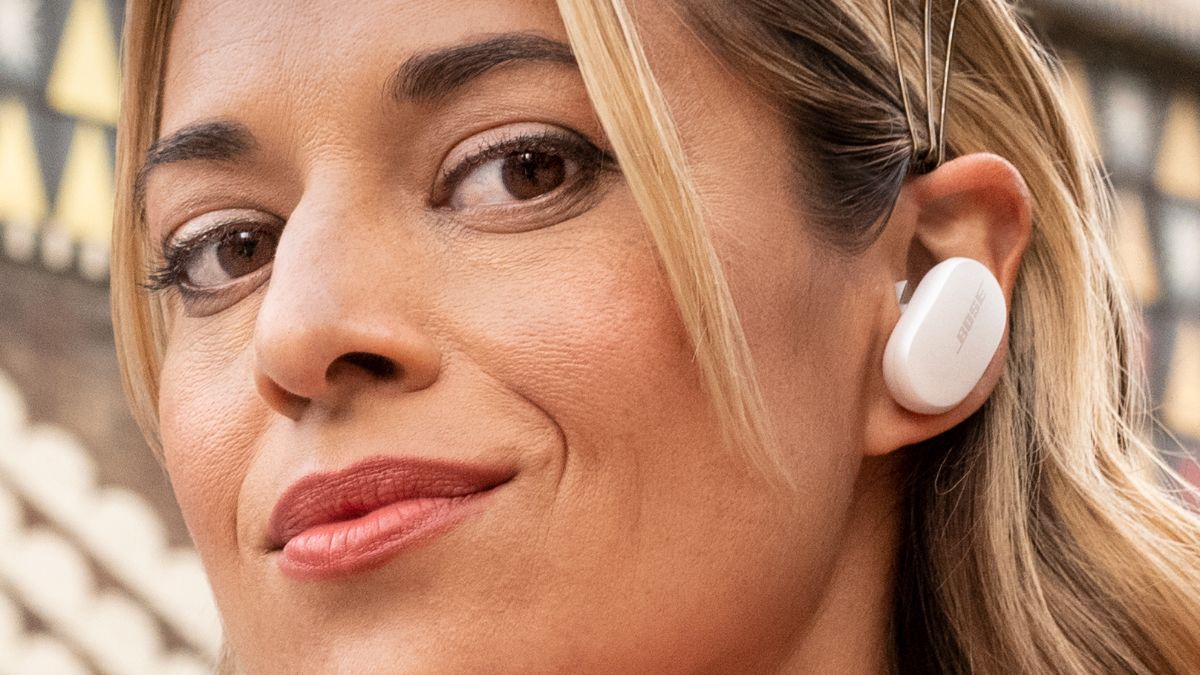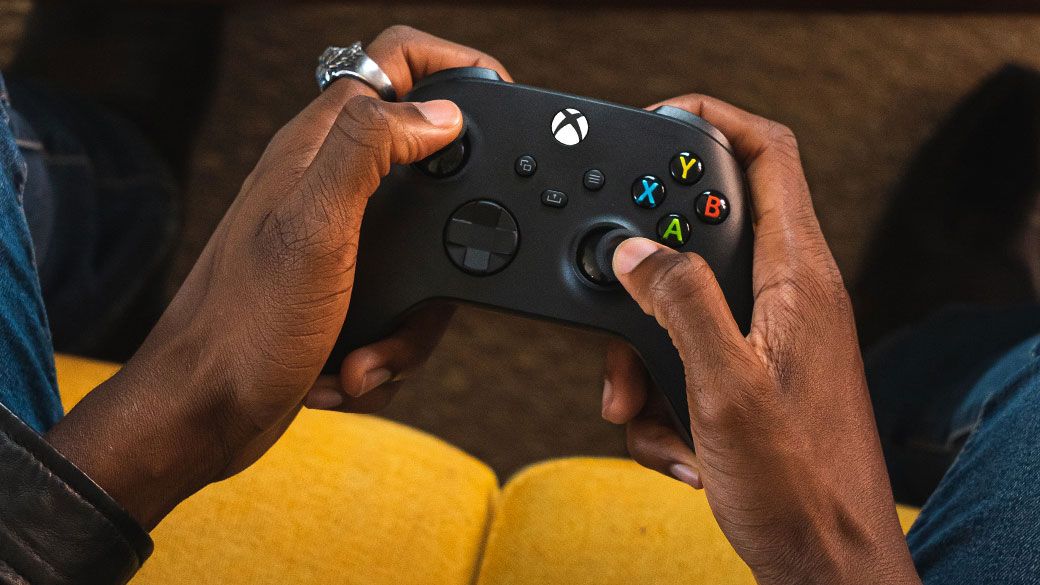Investing in the best noise-cancelling earbuds is a serious commitment. You’re not just looking for wireless earbuds that can block out ambient noise effectively. The goal is to purchase something that can also rewards you with high-end sound and special features. And with the category growing immensely since the AirPods Pro came to market, there’s a plethora of options that are an Amazon 1-Click order away from arriving at your front door.
Apple isn’t the only name on the noise-cancelling block that puts out excellent true wireless hardware. The king of ANC, Bose, remains a primetime player, as well as premium audio staples such as Bowers & Wilkins and Sony. Let’s not forget newcomers like Edifier and Samsung either, two brands that have established their place among the category elite.
After testing every major release, we’ve compiled a ranking of the best noise-cancelling earbuds based on performance, price, and purpose. Keep scrolling to see which models guarantee peaceful listening.
What are the best noise-cancelling earbuds?
In first place on our list of the best noise-cancelling earbuds is the Bose QuietComfort Earbuds. No surprise, considering how Bose integrated the 700 Headphones’ category-leading ANC technology into a compact design. Call quality is also unbeatable for crystal clear voice and video calls in any setting
A close second is the Sony WF-1000XM4. While nearly flawless, its noise-cancelling capabilities, which are excellent, fall slightly short of the QuietComfort Earbuds. On the other hand, the WF-1000XM4’s battery life, feature set, and sound quality are superior. The fantastic redesign doesn’t get the credit it deserves either.
The Edifier NeoBuds Pro makes a surprising appearance at No. 3. Why is that? One word: value. Getting up to 42dB of noise cancellation, sound customization via EQ, and LDAC/LHDC support for as low as $89 is almost unheard of. Not to mention these buds sound just as good as most sub-$300 rivals out there.
If money is no object, then it doesn’t get any better from a sonic standpoint than the Bowers & Wilkins PI7. These luxury buds have a spec sheet that will leave audiophiles salivating at the mouth, along with one-of-a-kind features like audio retransmission via charging case, so you can get hi-res sound when plugging it into any compatible analog audio output.
The AirPods Pro remains the finest selection for iPhone owners that want balanced audio and noise cancellation when commuting. It also continues to receive new features from time to time through iOS updates.
Keep reading for more extensive feedback on the best noise-cancelling earbuds.
The best noise-cancelling earbuds you can buy today
The QuietComfort Earbuds are untouchable when it comes to active noise cancellation and call quality. Bose figured out how to stuff its elongated buds with the same ANC technology as their flagship headphones, nearly matching the 700’s elite noise neutralization with half the mics. The same warm sound signature has been carried over as well, with the company’s Active EQ and proprietary drivers manning audio duties. And if you’re someone who spends most of their days on phone calls and video chats, then take solace knowing the QuietComfort Earbuds will treat you better than any other pair of wireless earbuds out there.
Keep in mind that battery life is subpar and enabling any of the listening modes will drain juice quickly. Also, the charging case is massive and carries a smaller number of charges than its formidable competitors.
Read our full Bose QuietComfort Earbuds review.
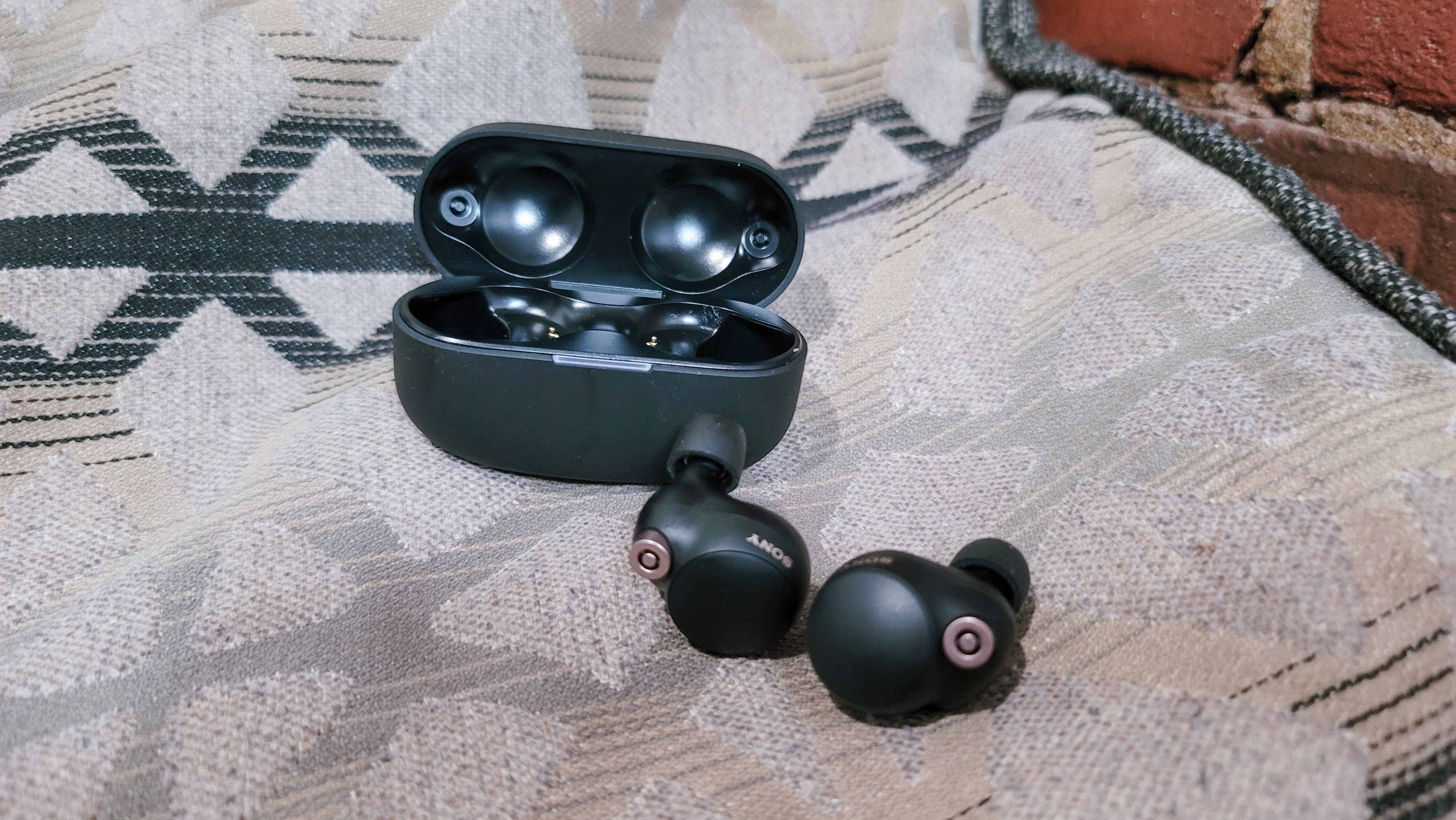
Bose may have the best buds for ANC, but Sony has the better overall model, and noise cancellation that doesn’t fall too far behind. The new V1 processor enhances performance on all fronts, allowing for more accurate noise neutralization, while clearing up the soundstage for rich and detailed results. 360 Reality Audio gives music an immersive feel and DSEE Extreme upscales lo-fi records for higher fidelity. You’re getting some of the longest playtimes with ANC on at 8 hours, which can be extended to 12 hours when disabling the mode. Features are also plentiful via the Sony Connect Headphones app, which offers numerous ways to customize the buds.
Sony gave the WF-1000XM4 a complete makeover with an oval shape and steampunk-like aesthetic, but its bulkiness and the memory foam tips cause stability issues. For $279, Sony could have included a Find My Buds function as well; a software update should be able to fix that.
Read our full Sony WF-1000XM4 review.
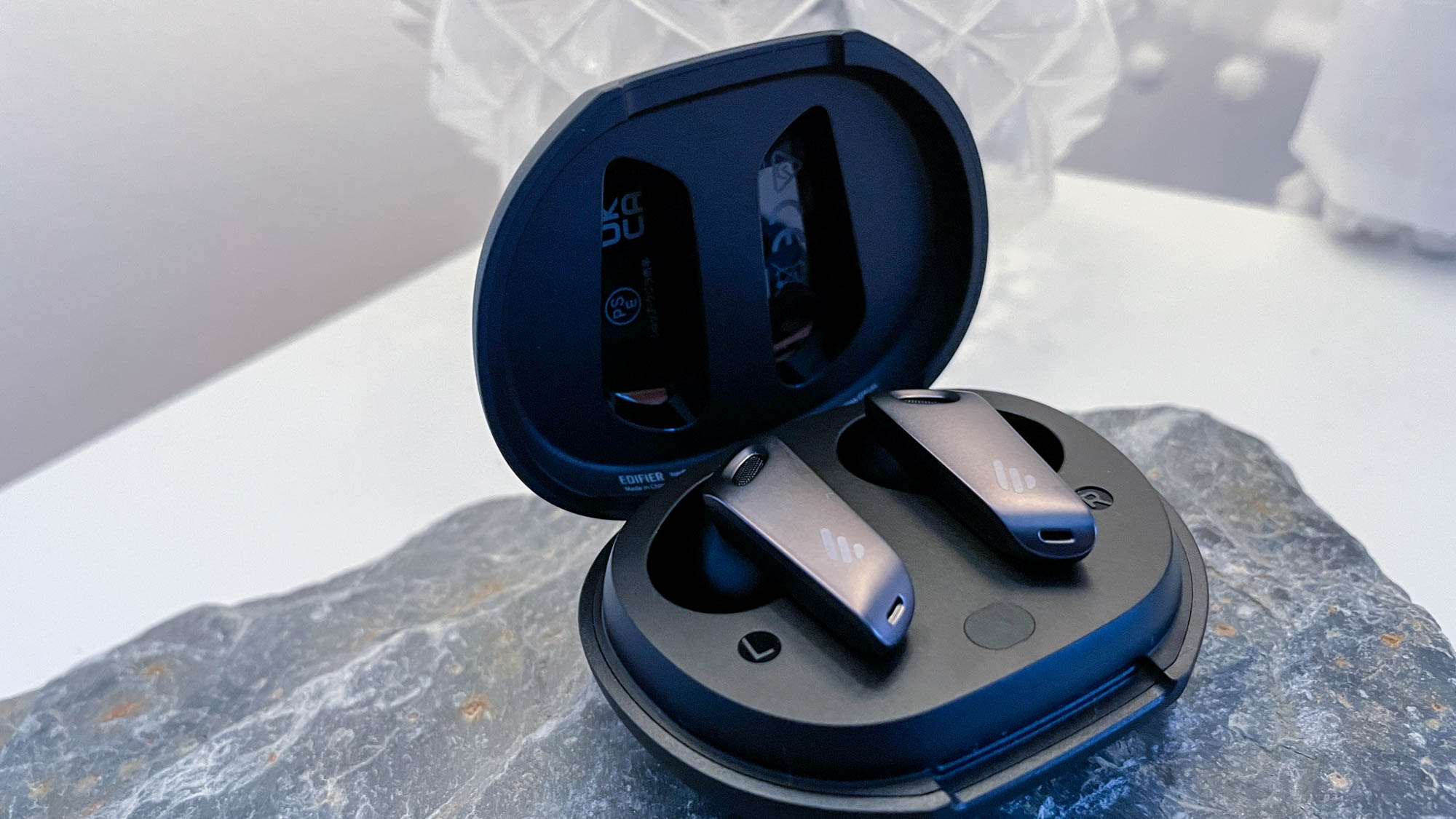
Edifier equipped their flagship wireless earbuds with superb audio technologies, including 10mm drivers, a Knowles balanced moving iron coil, customizable EQ, and LDAC and LHDC codec support. The latter is beneficial for streaming lossless music at the highest transfer speeds. A low-latency Game Mode also comes part of the package, improving audio synchronization when playing games and watching videos. Noise cancellation is just as impressive and blocks out enough ambient noise to enjoy music in peace. The Ambient Sound mode is also powerful, providing greater awareness of your surroundings and letting you eavesdrop on conversations from several feet away.
Battery life isn’t anything to brag about, especially since it is only 30 minutes longer than the AirPods Pro. The lack of certain modern features like on-ear detection and wireless charging seems like a questionable decision as well. Either way, $89 for this type of sound performance is not something you stumble upon frequently.
Read our full Edifier NeoBuds Pro review.
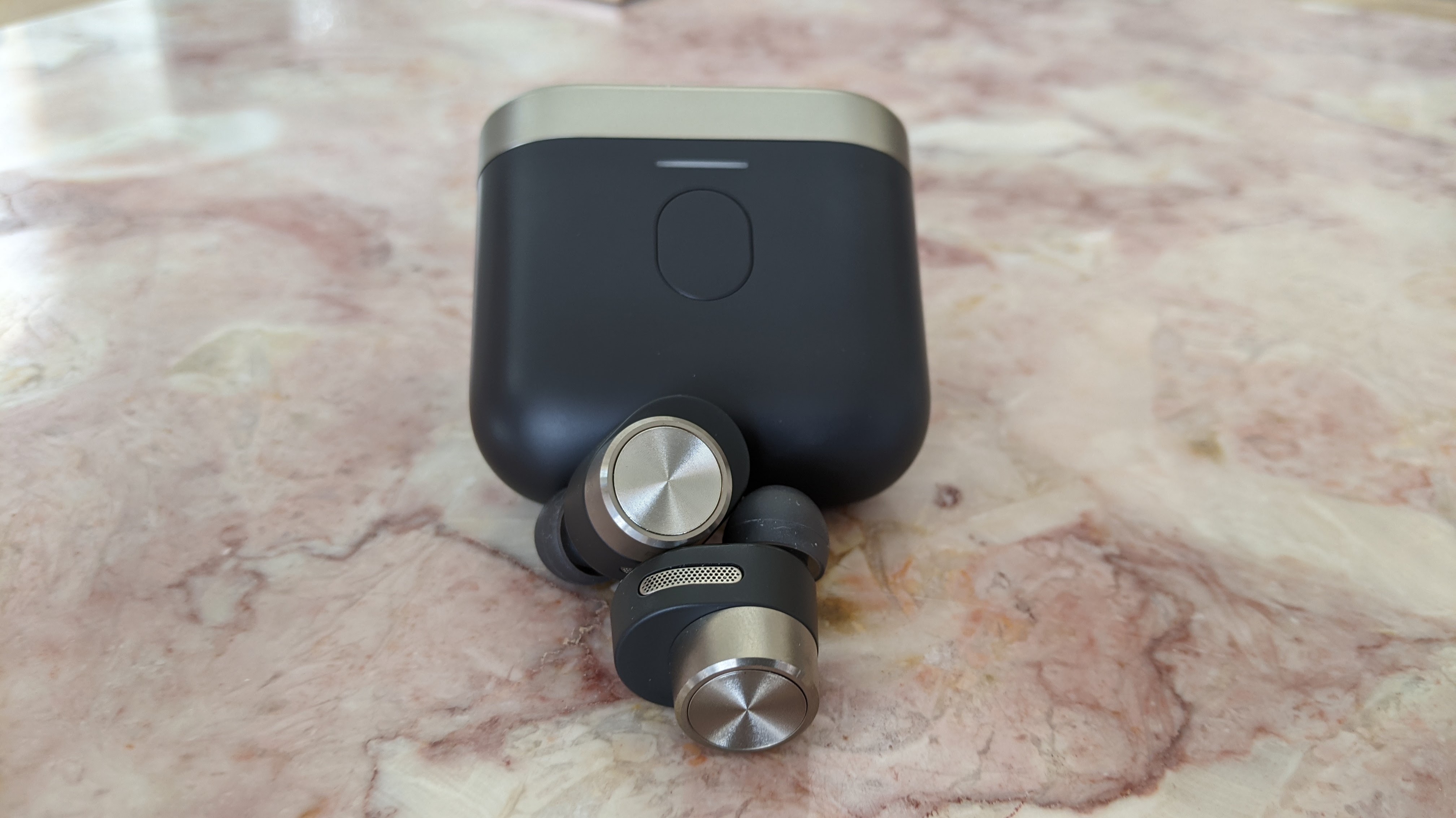
B&W’s top wireless earbuds are their most ambitious creation yet. Sound is impeccable, highlighted by 24-bit sound, aptX Adaptive codec support, and dual hybrid driver units with individual amps. Lows are robust, mids are crisp, and highs are detailed, resulting in a full-bodied listening experience that can be experienced in wireless or wired mode, thanks to B&W’s innovative charging case that plugs into any audio jack and retransmits audio to the buds. The PI7 also comes with strong noise neutralization to enjoy music peacefully in all settings. Build quality is another hallmark that is beautifully exhibited, from the sleek, durable aesthetics to niche details like the protruding metal cylinder touch panels.
Don’t get us wrong now, $400 is a lot to ask for any pair of wireless earbuds, especially ones that require a recharge every 4 hours. However, if you value audio that much and don’t mind the 20 hours of playtime provided by the charging case, you’ll be extremely satisfied with this purchase.
Read our full Bowers & Wilkins PI7 review.
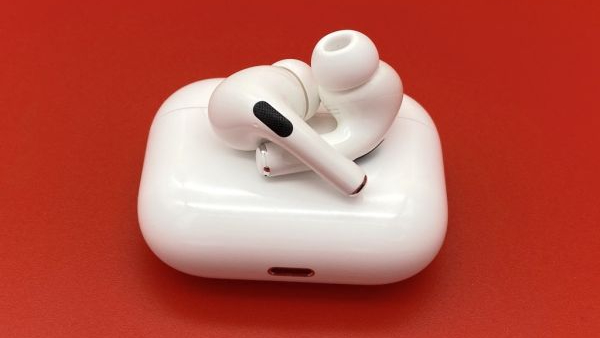
The AirPods Pro improves on Apple’s iconic wireless buds with a water-resistant design and a wide range of handy touch controls. Battery life could be longer, but the noise cancellation features are top-notch. Turn on ANC and the AirPods Pro do a great job blocking out everyday noise, but you can switch to the useful Transparency Mode when you want to be aware of your surroundings.
Apple’s high-end buds also include three pairs of swappable silicone ear tips, making it easy to find a great fit. The stems themselves are also shorter than the ones found on the original AirPods. And of course, if you’re an iPhone user, the AirPods Pro work seamlessly with iOS. Blend all these premium features with clean, powerful sound that suits all genres of music, and you have the company’s best audio product to date. And we can’t forget about the awesome new features like spatial audio to create a movie-theatre-like sound experience and Find My support for easily locating misplaced buds when out of range.
Read our full AirPods Pro review.
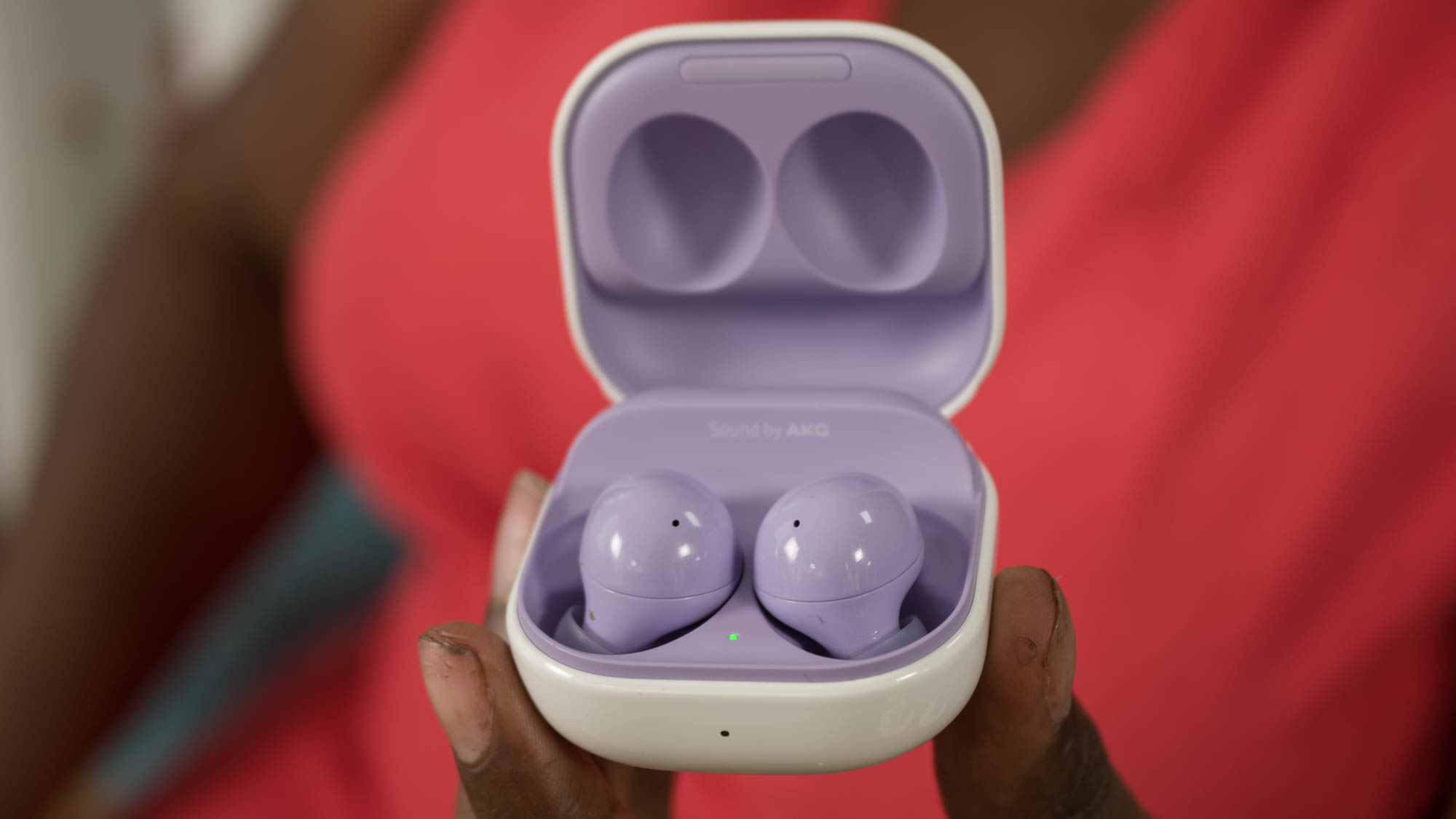
Samsung managed to downscale the Galaxy Buds 2 in size without compromising much on the performance end. These noise-cancelling buds come with some of the most effective ANC technology that we’ve tested, rivaling several other sub-luxury models. Sound remains the series’ greatest strength with the buds boasting a dynamic two-way speaker consisting of a tweeter and a woofer that produces crisp highs and deep lows. You get several well-engineered presets to play within the Galaxy Wearable app. There’s also a low-latency gaming mode that synchronizes sound better when gaming and the ability to control the buds from your Galaxy Watch 4.
The 5-hour battery life puts it on par with its premium cousin, the Galaxy Buds Pro, along with the Google Pixel Buds A-Series. At the same time, this is also lower than what category leaders like the Sony WF-1000XM4 offer.
Read our full Samsung Galaxy Buds 2 review.
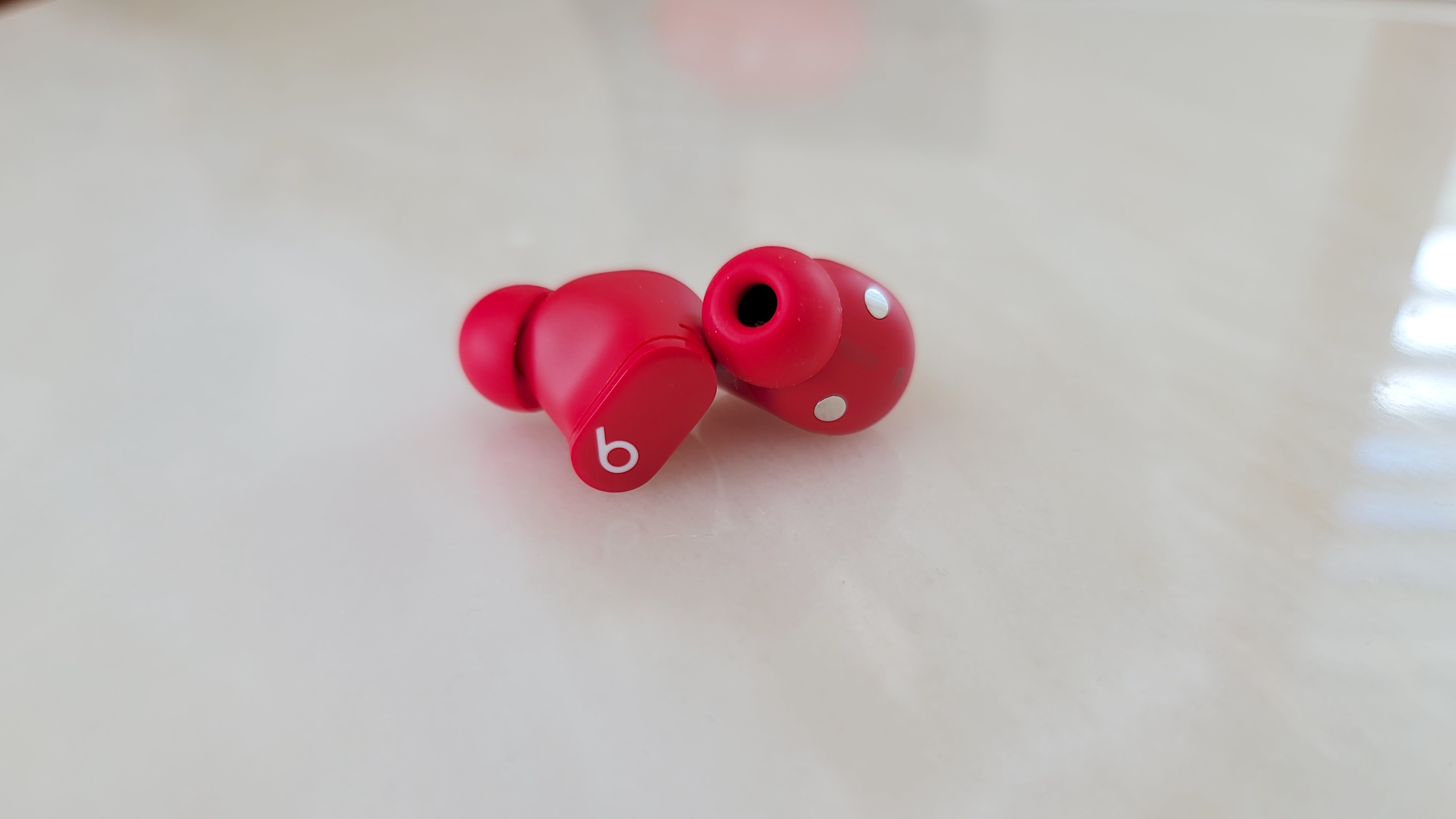
Platform-neutral performance on a pair of Apple earbuds was a pipe dream until the Beats Studio Buds came along. These super-tiny, cordless in-ear monitors play nicely with iOS and Android devices, operating on a new (and undisclosed) processor that provides true Find My Buds support and one-touch pairing to Apple or Android phones via Class 1 Bluetooth connection. Apple tweaked the soundstage to give these buds more refined sound than the Powerbeats Pro. ANC is also shockingly good on the Studio Buds and cancels out a wide number of ambient sounds. Battery life is rated higher than the AirPods Pro as well.
Some iOS users won’t be happy about unsupported features such as auto switching between iCloud-registered devices and Siri Announce Notifications; these are exclusive and tied to Apple’s H1 processor. Nonetheless, the performance and value these buds offer is too good to ignore.
Read our full Beats Studio Buds review.
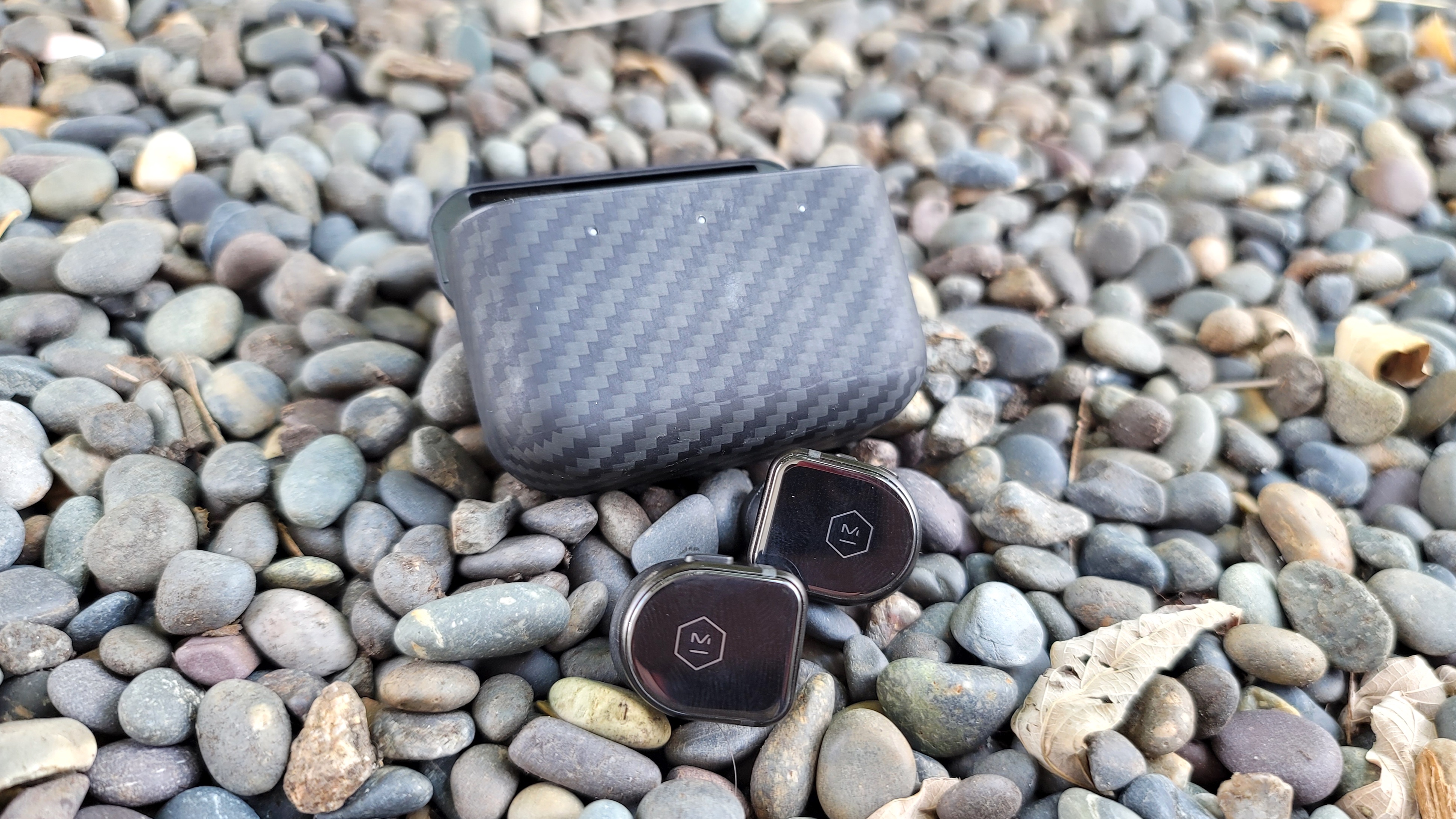
Master & Dynamic gave its flagship wireless earbuds the sporty treatment. The MW08 Sport comes with aesthetic upgrades such as shatterproof materials and water resistance, along with a Kevlar-wrapped charging case. Two-level ANC ensures less-noisy environments when exercising or lounging at home. Battery life is remarkable with 10 hours of ANC playback on a single charge, which can be extended to 12 hours when disabling the feature. Most fitness buffs want energetic and vibrant sound to get their motor running and the MW08 Sport delivers it, pumping out balanced frequencies with deep, impactful bass.
The feature set is extremely limited and doesn’t match what other sports headphones bring to the table; two models that come to mind are the Jaybird Vista 2 and JBL Reflect Mini NC. Also, the MW08 Sport is more expensive than the original MW08, which doesn’t come cheap either at $299.
Read our full Master & Dynamic MW08 Sport review.
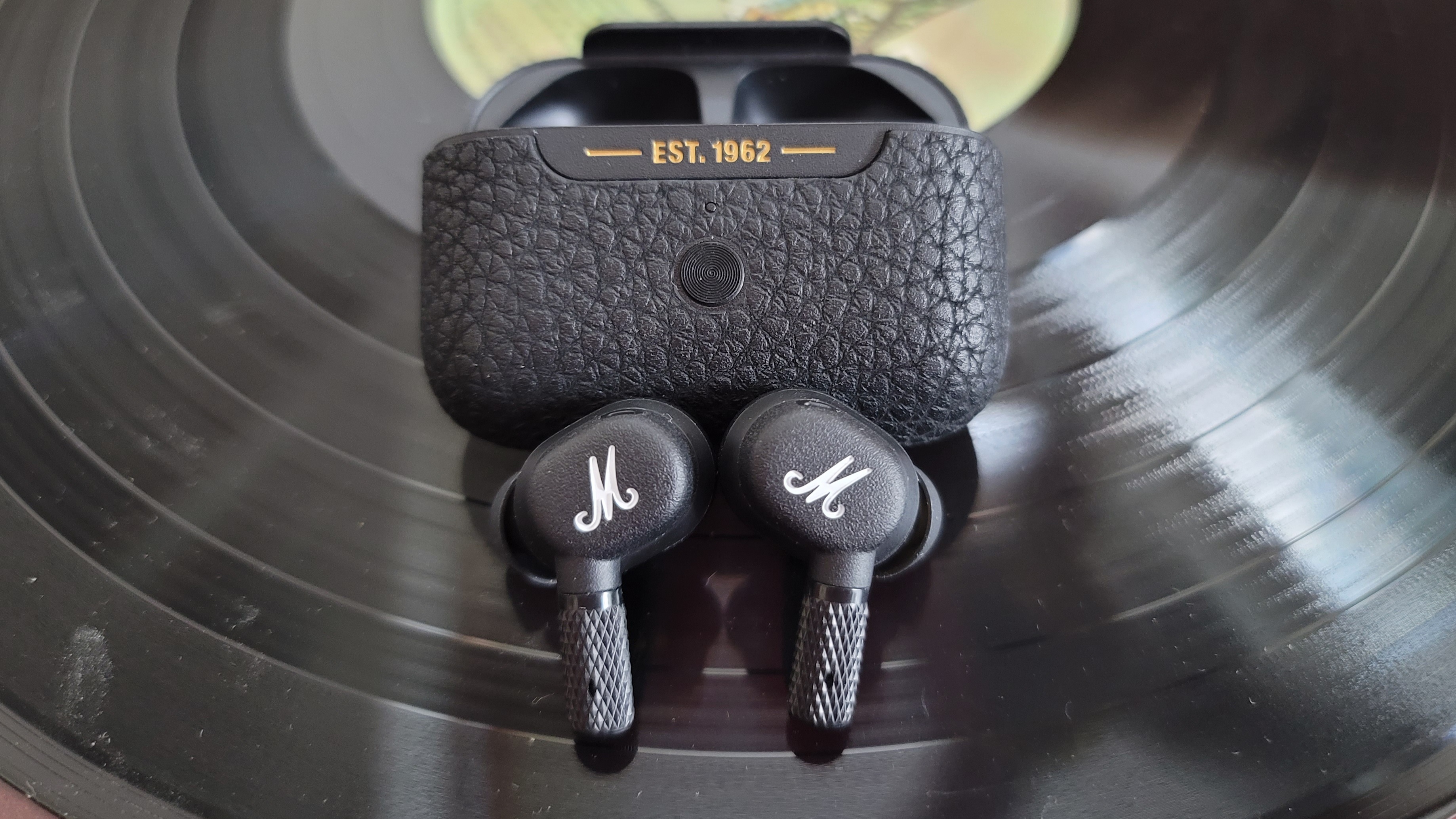
After striking out hard with the Minor III, Marshall redeemed themselves with the impressive Motif A.N.C., which balances hallmark sound and strong noise cancellation in a retro-inspired design. Frequency range is stellar, giving listeners a bit of everything: punchy lows, crisp highs, and detailed highs. There’s an EQ with multiple presets in the Marshall app to personalize the soundstage. ANC is the signature feature on these buds, and it’s powerful, minimizing high-frequency noises better than most rivals in the category. We also love how Marshall gives these wireless in-ears modern flavor with Bluetooth 5.2 and one-touch Google Fast Pair for instantaneous connectivity on Android devices.
Battery life isn’t a highlight (4.5 hours of ANC playtime), nor are the finicky touch controls, but the real value lies in the overall sound performance.
Read our full Marshall Motif A.N.C. review.
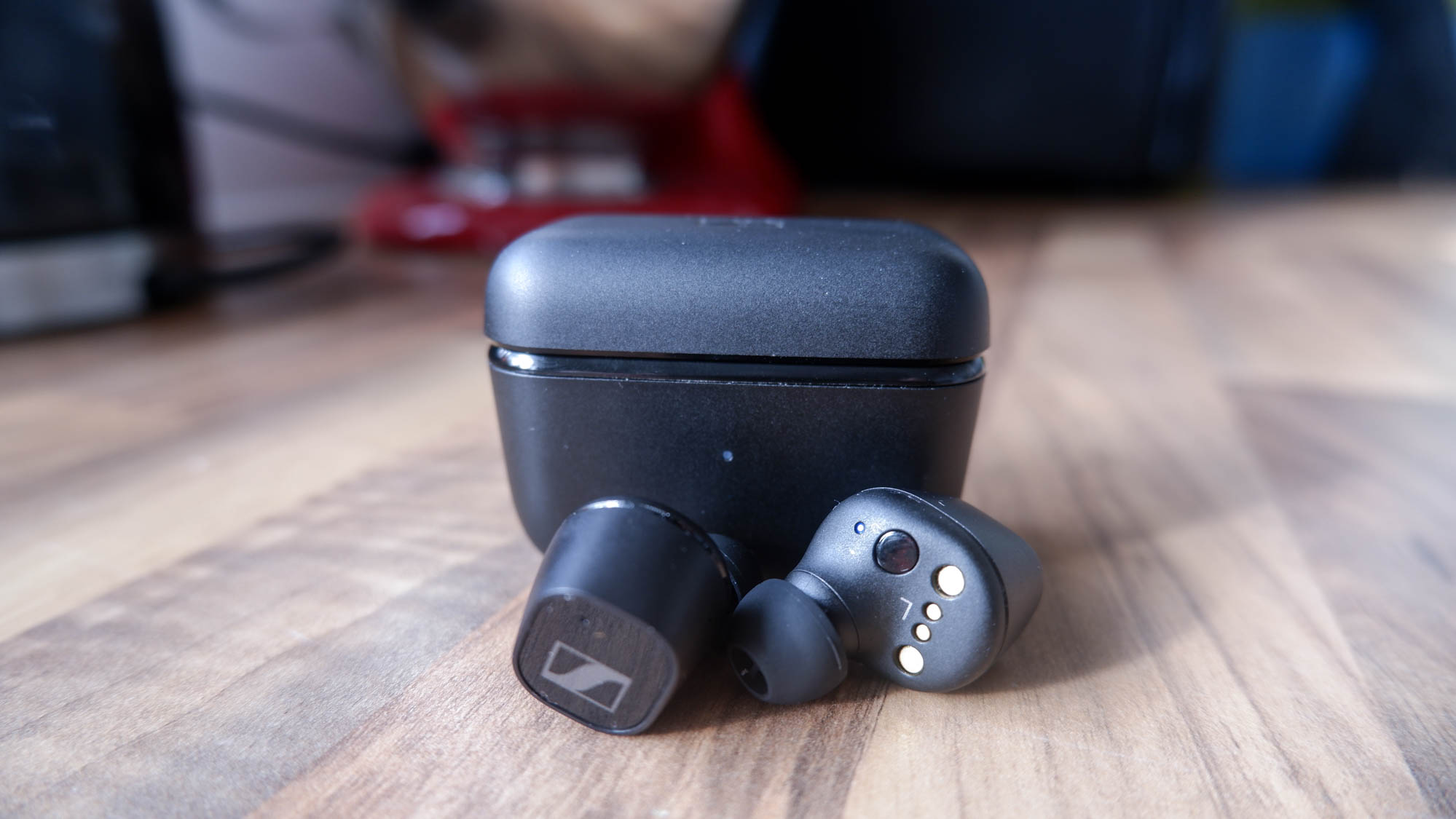
Several critics felt Sennheiser dropped the ball with the original CX True Wireless, the company’s first attempt at a mid-range model with legacy sound. Not only does the CX Plus fix most of the problems of the past, but it adds noise cancellation into the mix, which performs better than what the Momentum True Wireless 2 produces. Full-bodied sound is expected right out of the box, though you have the option to tweak it via EQ. The onboard mics also pave the way for great call quality and voice assistance. Battery life is another hallmark that shouldn’t be overlooked, providing up to 8 hours of ANC playtime per charge.
There are some popular features missing, and the design could have been smaller, but the sound and noise cancellation are enough value to warrant the purchase.
Read our full Sennheiser CX plus review.
How to choose the best noise-cancelling earbuds for you
ANC is the most crucial attribute when seeking out the best noise-cancelling earbuds. You want active noise cancellation, not passive noise cancellation. There is a huge difference between the two. PNC uses the design to seal out unwanted noise, whereas ANC uses microphones and speakers to reduce background and surrounding noises. Essentially, look for a pair that can do the latter at a high level and offers an ambient sound mode to increase environmental awareness, when necessary.
Audio quality is second on the checklist. Explore models with powerful drivers and customization settings to personalize how you hear all media formats. Bonuses like an EQ, presets, or spatial audio are greatly appreciated, but not vital.
Be mindful that special features suck up lots of power, so any model that can grant you solid listening times with ANC on is clutch. The industry-standard battery life is 5 hours for noise-cancelling earbuds and 24 hours for charging cases, though you can find models that generate double these playtimes.
What about wireless functionality? More wireless earbuds are supporting Bluetooth 5.0 versions, giving users faster connectivity, increased range (est. 120 meters max), longer battery, and even multipoint technology to pair two audio sources simultaneously. Add digital assistance (Siri, Google, Alexa, Bixby) to this section as well.
How we test the best noise-cancelling earbuds
Our testing process for determining the best noise-cancelling earbuds consists of evaluating several factors, including design, comfort, sound, and value. All selections are compared to similar products in the category in terms of features, fit, and pricing.
Noise-cancelling earbuds are worn over the course of a week for 2 to 3 hours at a time. During this period, we assess comfort, ease of use, and audio quality. Reviewers listen to sample tracks across several music genres, including hip-hop, rock, jazz, and classical, while analyzing clarity, depth, imaging, and volume. Audiobooks, games, podcasts, and videos are also accounted for.
Furthermore, models featuring the latest audio codecs (e.g., aptX, LDAC) and spatial audio are tested using compatible hi-res streaming services (e.g., Apple Music, Deezer, Tidal).
To learn more about how these services can improve the sound quality on your laptops and mobile devices, here is an expert audio codec FAQ on everything you should know about FLAC files, MP3s, and all other audio file codecs.
Once testing is completed, every model is rated based on our five-point system (1 = worst, 5 = best). Any product that is truly exemplary is awarded an Editor’s Choice.

